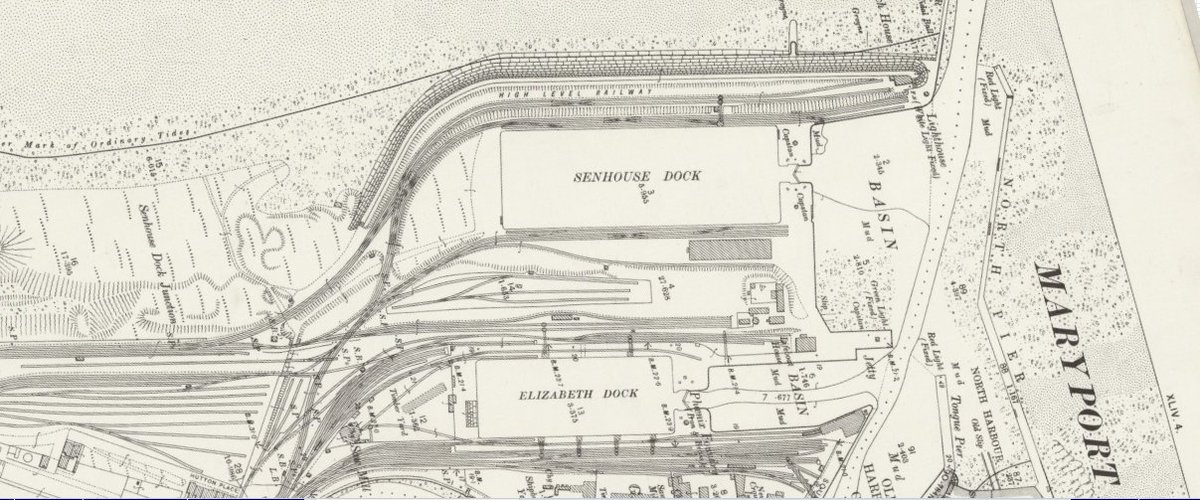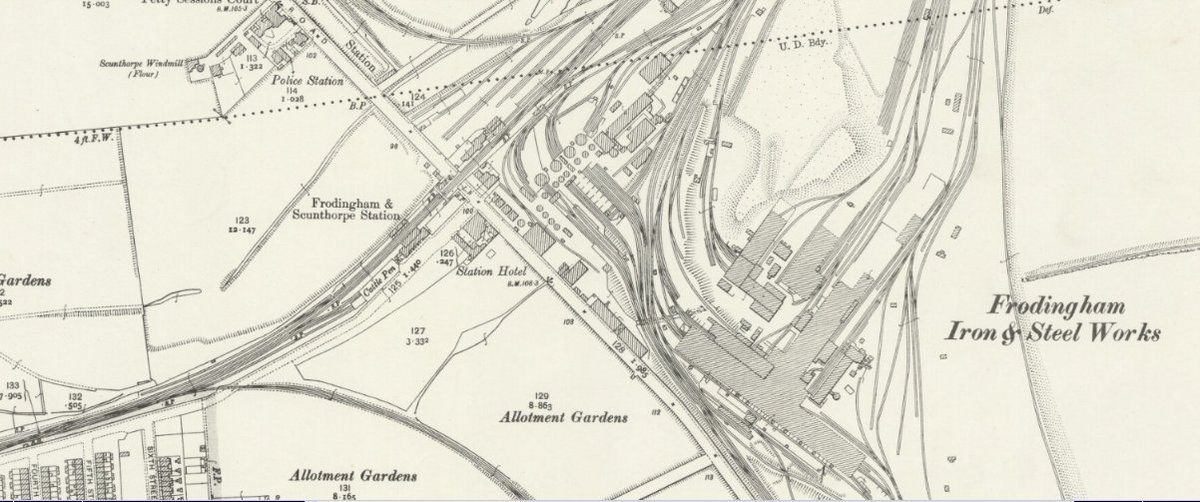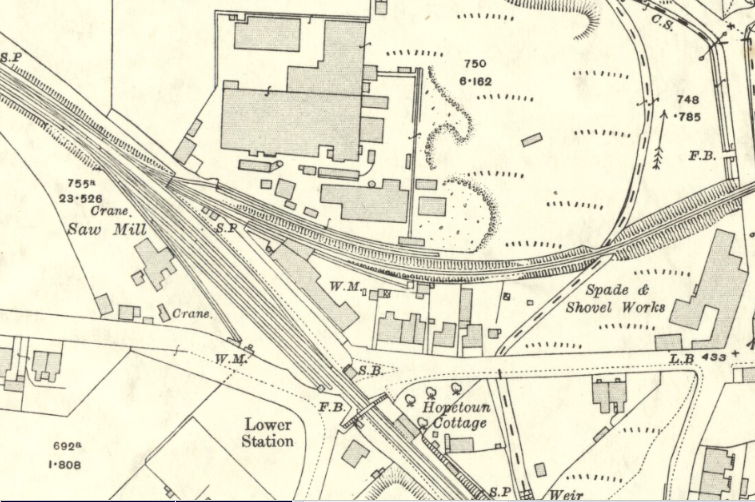Sneaking in a little #SWOS2020 project thread - on UK railways, accidents & steel!
Hopefully you won& #39;t mind being Twitterbombed?
As several papers so far have shown, transport was crucial to the steel industry: not least in moving raw materials & finished goods.
@Steelworlds
Hopefully you won& #39;t mind being Twitterbombed?
As several papers so far have shown, transport was crucial to the steel industry: not least in moving raw materials & finished goods.
@Steelworlds
Railways were good at shifting heavy, bulky items; many plants were so big they had internal railway networks.
They needed connections to the national network - & staff to work the railways, too.
All that meant accidents.
#SWOS20
They needed connections to the national network - & staff to work the railways, too.
All that meant accidents.
#SWOS20
This thread has a few examples of where steel & railways intersect - & encouragement to find out more from our project database, available free at: http://www.railwayaccidents.port.ac.uk"> http://www.railwayaccidents.port.ac.uk
Though our project focuses on railway company staff, others appear too, albeit usually in passing.
#SWOS20
Though our project focuses on railway company staff, others appear too, albeit usually in passing.
#SWOS20
Accidents within steel works, whether railway or other, would have been reported to the Factory Inspectorate - sadly, their detailed investigation reports don& #39;t survive.
However, for cases outside steel works property, Board of Trade accident investigations survive.
#SWOS20
However, for cases outside steel works property, Board of Trade accident investigations survive.
#SWOS20
So, on 13/02/1914 Jan Glevin, 68, a dock labourer employed by Workington Iron & Steel, was pushing a wagon with a colleague at Senhouse Dock, Maryport.
A train bumped into the wagon, knocking Glevin down. He suffered a bruised shin & shock.
Map 1899 (c) @natlibscotmaps #SWOS20
A train bumped into the wagon, knocking Glevin down. He suffered a bruised shin & shock.
Map 1899 (c) @natlibscotmaps #SWOS20
Sometimes railway company staff were injured by steel works& #39; property/ actions - & we get little insights into the life in the steel works.
On 17/04/1914 Caledonian Railway brakesman G Stewart was coupling wagons standing next to Dalzell Steel Works, #Motherwell.
#SWOS20
On 17/04/1914 Caledonian Railway brakesman G Stewart was coupling wagons standing next to Dalzell Steel Works, #Motherwell.
#SWOS20
Part of No. 3 loading bank wall& #39;s coping had been broken away & #39;some time previously by a steel plate which had dropped on to it.& #39;
Stewart stepped into the gap, falling between the wagons & wall, bruising his thigh.
Map 1912 (c) @natlibscotmaps
#SWOS20
Stewart stepped into the gap, falling between the wagons & wall, bruising his thigh.
Map 1912 (c) @natlibscotmaps
#SWOS20
The accident report finished: & #39;It is satisfactory to note that the owners of the Steel Works had the bank repaired a day or two later.& #39;
So ... they could be quick on occasion!
#SWOS20
So ... they could be quick on occasion!
#SWOS20
Sometimes consequences were more severe. On 20/04/1915 Great Central Railway goods guard Albert Scott, 24, was uncoupling wagons from his train at #Frodingham.
He walked too close to an adjacent branch of the Frodingham Iron & Steel Works.
Map 1912 (c) @natlibscotmaps
#SWOS20
He walked too close to an adjacent branch of the Frodingham Iron & Steel Works.
Map 1912 (c) @natlibscotmaps
#SWOS20
A Works loco was shunting on the line, which struck Scott, running over his left leg.
It was later amputated.
The report found that the Works& #39; engine driver couldn& #39;t see Scott until it was too late.
#SWOS20
It was later amputated.
The report found that the Works& #39; engine driver couldn& #39;t see Scott until it was too late.
#SWOS20
Lastly, on 27/01/1914 at Bathgate Lower, #Scotland, goods guard A Scoon was working on wagons being moved into a siding in the West Lothian Steel Sheet Rolling Mills & Shovel Works.
The report gives us some nice detail about this bit of the works:
#SWOS20
The report gives us some nice detail about this bit of the works:
#SWOS20
the floor & #39;is laid with cast-iron plates& #39; and Scoon was wearing hob-nailed boots.
Scoon ran ahead of the wagons but slipped on the floor plates and fell. Fortunately he only bruised his left leg - it could have been a lot worse.
#SWOS20
Scoon ran ahead of the wagons but slipped on the floor plates and fell. Fortunately he only bruised his left leg - it could have been a lot worse.
#SWOS20
So that& #39;s a few of the steel-related railway accidents in our database - hopefully of interest to #SWOS20 folk (and beyond).
There are other cases, plus will be more to come as we add around 70,000 more accidents to our database.
There are other cases, plus will be more to come as we add around 70,000 more accidents to our database.
Do have a look - http://www.railwayaccidents.port.ac.uk"> http://www.railwayaccidents.port.ac.uk
And we& #39;re keen to hear about the railway accidents inside steel works, too, so please let us know if you find any!
#SWOS20
And we& #39;re keen to hear about the railway accidents inside steel works, too, so please let us know if you find any!
#SWOS20
As with a number of the genuine #SWOS20 papers, our project is all for collaboration - we& #39;re a joint effort between @portsmouthuni @RailwayMuseum & @MRCWarwick, with help from @UkNatArchives.
We& #39;re run by dedicated #Volunteer teams - our thanks to all involved, of course!
We& #39;re run by dedicated #Volunteer teams - our thanks to all involved, of course!
We& #39;re keen to keep collaborating & building on the connections across industries & workplaces that are coming out in the #SWOS20 conference!
ENDS.*
* Thanks to @Steelworlds for not minding a renegade conference thread, & thanks to all conf participants; it& #39;s been great so far!
ENDS.*
* Thanks to @Steelworlds for not minding a renegade conference thread, & thanks to all conf participants; it& #39;s been great so far!

 Read on Twitter
Read on Twitter





